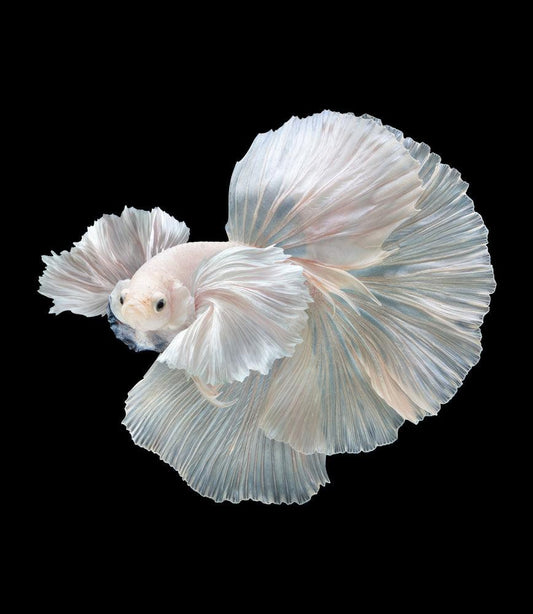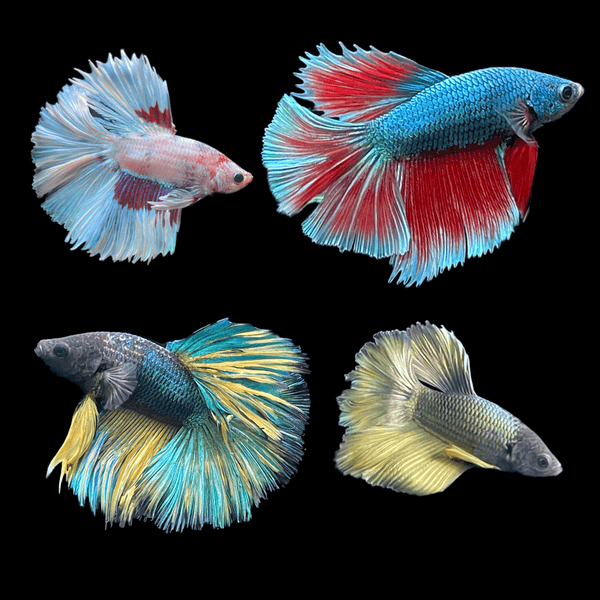Betta Fish Lifespan: How to Guarantee Your Betta Lives Longer
Wiki Article
Reproducing Betta Fish: a Comprehensive Step-By-Step Guide to Effectively Raising Baby Bettas From Eggs to Their Adult Years
Reproducing Betta fish is a careful undertaking that requires cautious preparation and implementation to guarantee the effective advancement of fry from eggs to grow fish. As the male Betta carefully constructs a bubble nest and guards the precious eggs, the subsequent phases of care and change demand interest to detail and knowledge of best practices.
Picking Breeding Pairs
When starting the journey of breeding Betta fish, selecting the appropriate reproduction pairs is crucial to attaining desirable traits and a healthy and balanced family tree - betta fish. The initial step in this process is to recognize the details qualities you desire to improve or preserve, such as shade, fin type, and physique. It is necessary to choose genetically diverse sets to prevent inbreeding, which can lead to wellness issues and unwanted qualitiesExamine prospective reproducing candidates carefully. A healthy and balanced male Betta should display vibrant shades, an active disposition, and well-formed fins, while the lady ought to likewise present dynamic pigmentation and a rounded stomach, suggesting preparedness for spawning. Observing the character of both fish is essential, as aggressive or excessively reluctant individuals may not reproduce successfully.
Paperwork of family tree is equally crucial. Maintaining documents of the moms and dad fish's ancestry can help you track hereditary attributes and potential problems. Furthermore, consult trusted dog breeders or online resources for assistance on selecting suitable pairs. Ultimately, spending time in the selection process will dramatically boost the likelihood of creating strong, dynamic offspring that satisfy your breeding goals (betta fish).

Preparing the Reproduction Storage Tank
Creating an optimum breeding environment is a vital step after picking appropriate pairs for Betta fish. The reproduction tank need to be particularly designed to provide convenience and promote the all-natural breeding actions of the fish. Begin with a tank dimension of at the very least 10 gallons to guarantee adequate area for both the male and women Bettas.Maintain a gentle purification system to keep the water tidy while avoiding solid currents that can emphasize the fish. Furthermore, an air stone can be contributed to provide oxygenation without interrupting the water surface excessive.
Temperature level policy is vital; go for a stable variety of 78-82 ° F(25-28 ° C) making use of a reliable heating unit. The pH degree should be preserved in between 6.5 and 7.5, and regular water modifications are essential to guarantee high water top quality.
Include floating plants or spawning sponges to develop hiding spots for the female, while likewise urging bubble nest structure by the man - betta fish. Finally, guarantee the container is without sharp decors and any prospective dangers, as the well-being of the fish need to constantly be prioritized during this vital phase of reproduction.
The Reproduction Refine
Typically, the breeding process for Betta fish involves a series of distinct and visible actions that show preparedness for recreation. The male Betta starts by developing a bubble nest at the water's surface, which functions as a site for the fertilized eggs. This nest is essential, as it offers a secure setting for the eggs till they hatch.When the nest is established, the male will certainly present courtship behaviors, such as flaring his fins and displaying dynamic colors to attract the lady. The lady, upon noticing the male's readiness, will certainly respond by showing upright red stripes along her body, indicating her receptiveness.
When the female approaches, the male involves in a breeding dancing, commonly causing an accept known as the "spawning." Throughout this accept, the female launches her eggs, which the male fertilizes right away. The fertilized eggs after that are up to the bubble nest, where the male carefully accumulates and more helpful hints returns them to the nest. Following this, the male presumes responsibility for securing imp source the nest and guaranteeing the safety and security of the eggs until they hatch out, commonly within 24-36 hours. This stage is crucial in the breeding procedure, laying the structure for successful fry advancement.
Taking Care Of Betta Fry
Caring for Betta fry needs cautious interest to their setting and nourishment to ensure healthy growth and advancement. After hatching out, Betta fry are very small and vulnerable, requiring a steady and tidy environment.Feeding Betta fry is similarly essential. Feed them small amounts numerous times a day, being mindful not to overfeed, which can lead to water top quality problems.
Transitioning to Adult Bettas
As Betta fry mature, transitioning them to grown-up Bettas is a crucial phase that calls for careful management of their environment and social communications. This procedure usually begins when the fry get to around 6 weeks of age, whereupon they can be slowly introduced to a more organized living atmosphere.To promote this transition, it is necessary to ensure that the water criteria-- such as temperature, pH, and ammonia degrees-- are optimal and secure. Adult Betta fish prosper in warm water (around 78-80 ° F) with a pH of 6.5 to 7.5. Progressively accustom the fry to these problems to minimize anxiety.
Social interactions are one more key aspect; man Bettas are infamously territorial and aggressive. It is a good idea to separate males right into specific tanks as they develop. Women Bettas can be housed with each other, however care needs to be taken to monitor for top article indications of aggressiveness.
Additionally, dietary modifications must be made as the fry expand. Incorporate top notch pellets and live foods to sustain their growth and health and wellness. By handling these variables effectively, you can promote a successful shift to the adult years for your Betta fish.

Conclusion
Successful reproduction of Betta fish calls for mindful interest to information throughout the whole procedure, from choosing genetically diverse pairs to giving optimum look after fry. By making certain appropriate breeding conditions and keeping water top quality, the probability of healthy offspring raises substantially. Furthermore, a balanced diet regimen and progressive adaptation to grown-up atmospheres are important for the growth and advancement of Betta fish. Complying with these actions carefully promotes a thriving populace of Betta fish, improving both their wellness and vigor.Report this wiki page